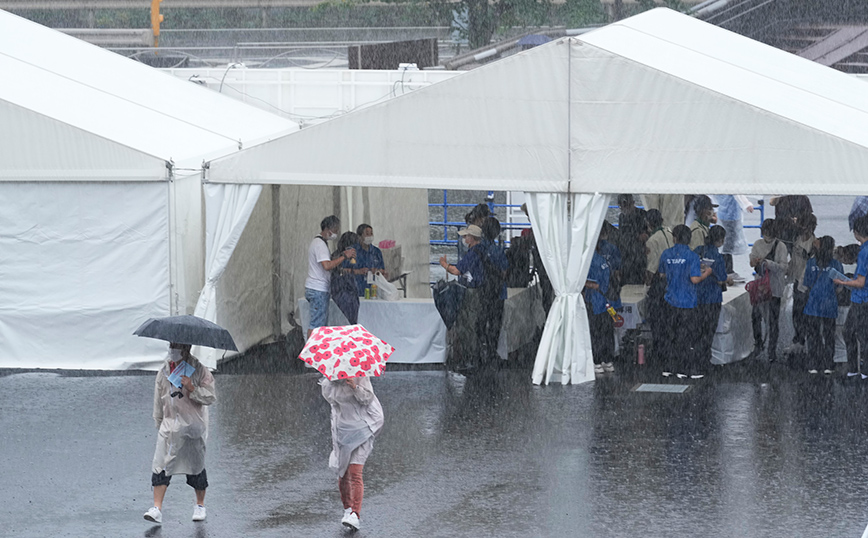
An alarm has been raised in Japan due to typhoon Nanmandol, which is hitting the west coast today. Authorities have advised millions of people to move away from the areas where strong effects are expected, due to the risk of floods and landslides.
The powerful typhoon weakened last night (18/9) as it made landfall in the southern Kyushu island city of Kagoshima, but its passage uprooted trees, shattered windows and caused rivers to overflow due to heavy rain.
State broadcaster NHK reported that a man lost his life and 50 others were injured as the typhoon passed through the island of Kyushu, but authorities have not yet confirmed the toll, APE-MPE reports, citing AFP.
Japanese Prime Minister Fumio Kishida, who was scheduled to leave for New York today to attend the UN General Assembly, will delay his trip by a day to assess the damage caused by the storm, his office said.
River levels rose
Officials at the Japan Meteorological Agency (JMA) warned that river levels have risen dangerously in the Miyazaki region, where some areas have seen more rain fall in 24 hours than they normally receive in the entire month of September.
“We ask you to remain alert because of (the risk of) floods and landslides,” a government official told reporters. However, given its intensity typhoonwhich was accompanied by winds of up to 234 kilometers per hour, damage so far appears limited.
Today the weather service’s recommendation for citizens to move away from the affected areas affected 9.6 million people. In Japan these orders are mere recommendations and not mandatory, with authorities often struggling to convince citizens to go to shelters.
On the island of Kyushu thousands of people spent the night in shelters, while others went to sturdier buildings. This morning nearly 313,000 households in Kyushu and Chogoku prefectures remained without power as the storm headed toward Japan’s west coast. As reported by NHK, hundreds of flights were cancelledwhile train routes in the affected areas were also affected.
At 11:00 (local time, 05:00 Greece time) the typhoon was heading north-northeast near Kitakyusou, with sustained winds of 162 kilometers per hour. “It continues to weaken,” said Ryuta Kurora, head of JMA’s forecasting service.
Typhoon season reaches its peak in Japan from August to September, with heavy rains that can cause flash floods and deadly landslides.
In 2019, Typhoon Hagibis killed more than 100 people in Japan. A year earlier Kansai Airport in Osaka was closed and 14 people died due to typhoon Jebi. In 2018, floods and landslides killed more than 200 people in western Japan. Scientists estimate that climate change is causing more intense storms and extreme weather events.
Source: News Beast
I’m Robert Neff, a professional writer and editor. I specialize in the entertainment section, providing up-to-date coverage on the latest developments in film, television and music. My work has been featured on World Stock Market and other prominent publications.







